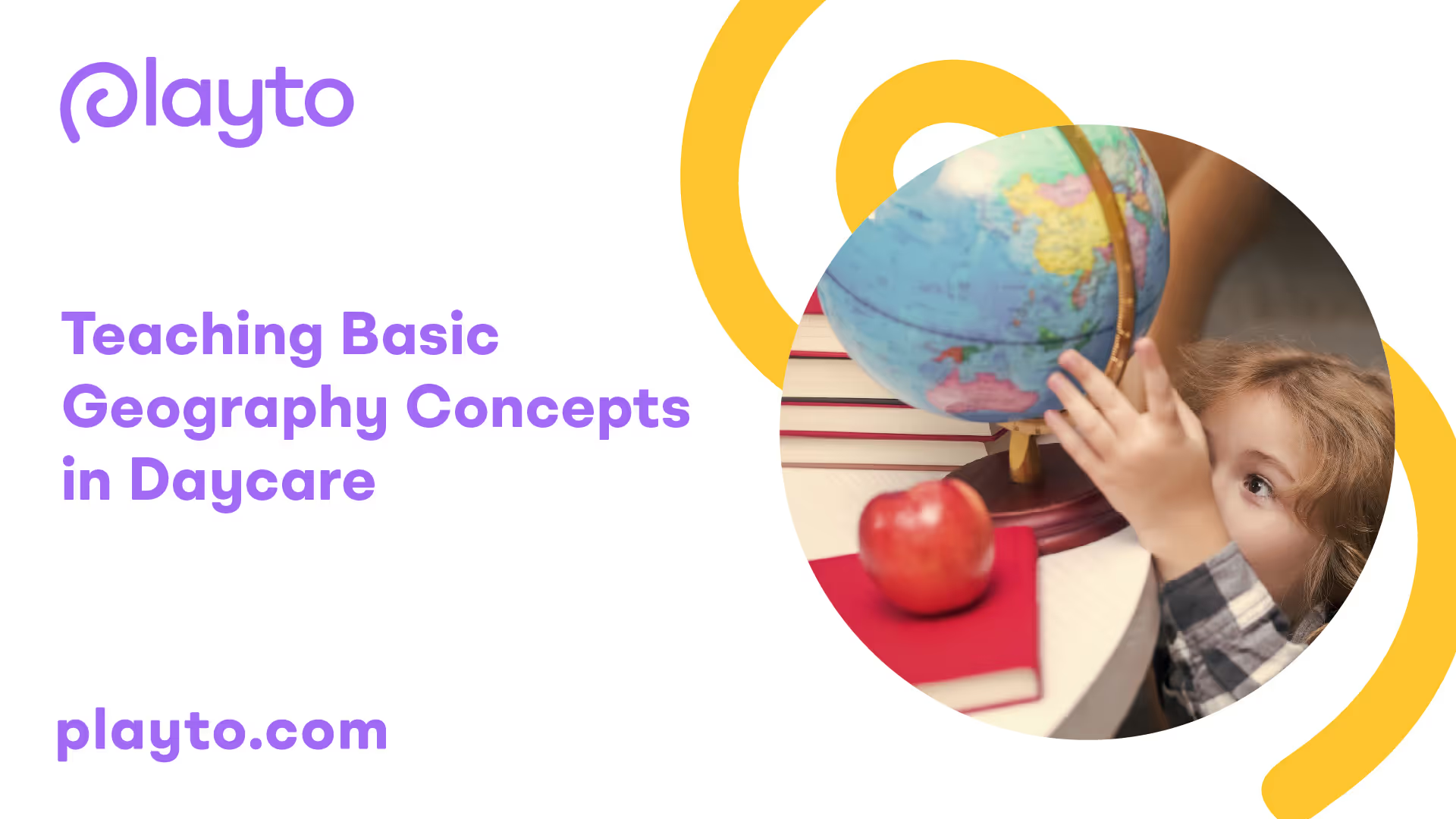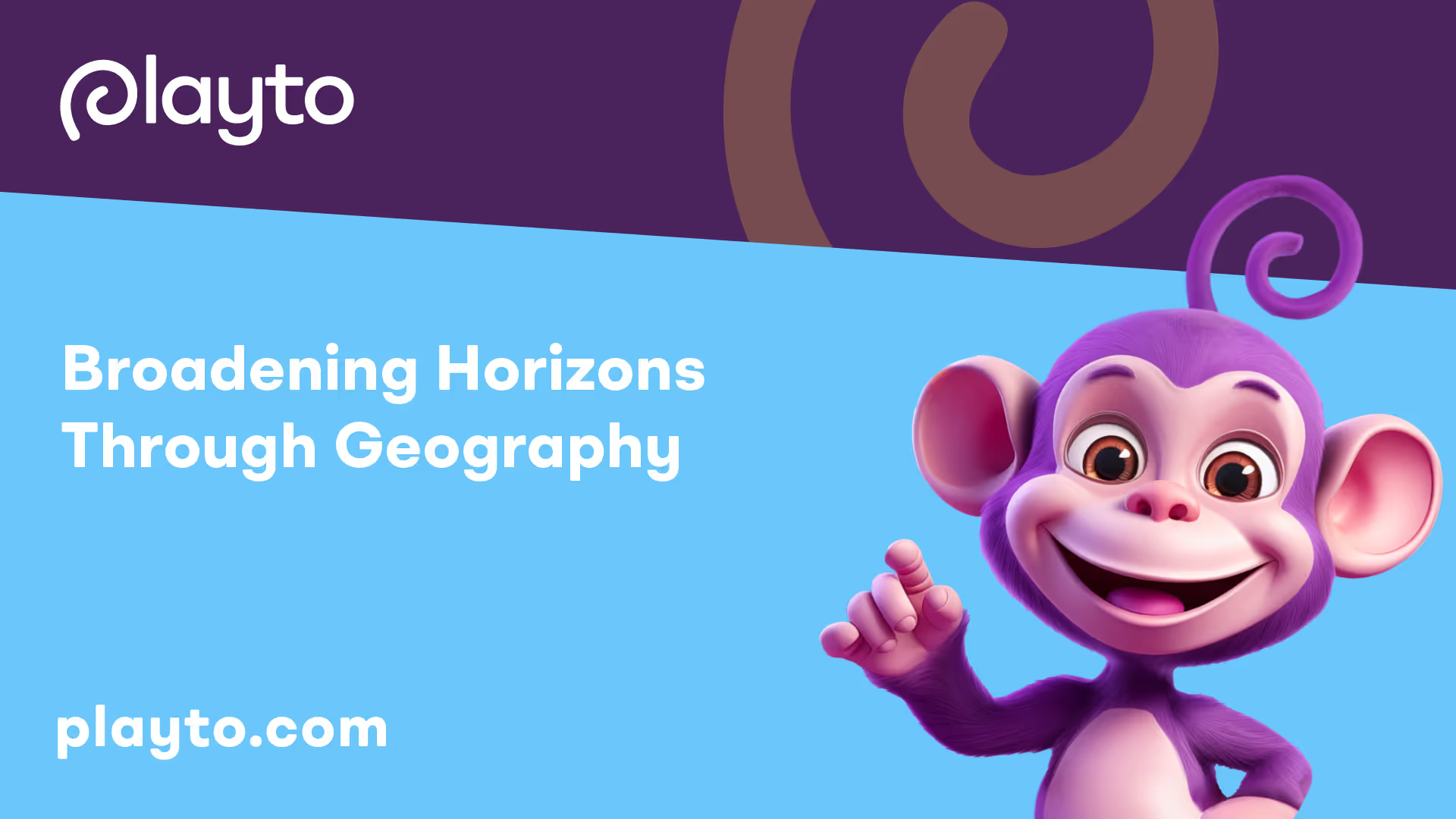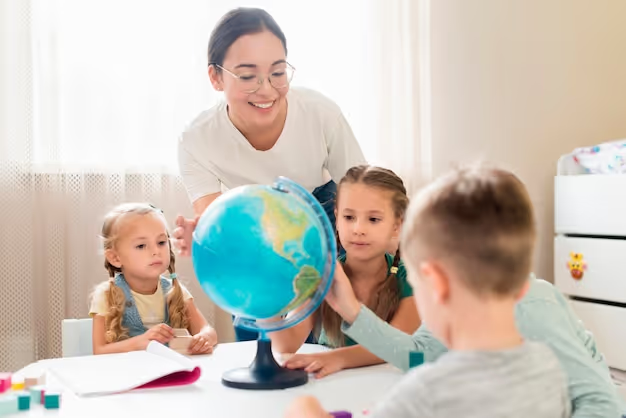
Exploring Geography Concepts
Introducing basic geography concepts to children at a young age can foster a sense of curiosity about the world around them. By engaging in hands-on activities and exploring different habitats, children in daycare can begin to grasp fundamental geography principles. In this section, we will explore two engaging activities that can help children learn about the Earth's elements and the diversity of animal habitats.
Hands-on Experience with Earth's Elements
One effective way to introduce children to basic geography concepts is through hands-on experiences with the Earth's elements. This approach allows them to engage their senses and develop a deeper understanding of land, air, and water. For example, educators can encourage children to collect small samples of dirt, water, and air from the backyard or local environment. By observing and discussing these elements, children can gain a tangible understanding of the Earth's composition and the importance of each element in different environments [1].
Sorting Animals by Habitats
An engaging activity that can help children grasp the concept of habitats is sorting animal figures based on their natural environments. By providing children with a variety of animal figures that live or move on land, in the air, or in water, they can sort and group them accordingly. This hands-on approach allows children to visually and physically associate animals with their respective habitats, aiding in the comprehension of different environments. It also provides an opportunity for discussions about the characteristics and adaptations of animals in each habitat. This activity can be enhanced by incorporating books, pictures, or videos that further illustrate the animals and their habitats [1].
By engaging children in these interactive activities, they can develop a foundation in basic geography concepts. These activities not only stimulate their curiosity about the world but also foster critical thinking skills and environmental awareness. To further reinforce their understanding, educators can incorporate additional tools such as puzzle maps, wooden puzzles, and miniature models of geographical formations [2]. By creating a stimulating and immersive learning environment, we can ignite a lifelong passion for exploring and understanding the world around us.

Interactive Learning Tools
To make the teaching of basic geography concepts in daycare engaging and interactive, incorporating various learning tools can be highly effective. Two interactive learning tools that can enhance children's understanding of geography are sorting cards for visual learning and the play dough globe activity.
Sorting Cards for Visual Learning
Utilizing sorting cards with images of natural scenes representing land, air, and water can aid in teaching children about the characteristics of each element on Earth, promoting a visual and interactive learning experience. This activity allows children to categorize and understand geographical features by placing the cards in the appropriate categories [1].
The sorting cards can be made by creating cards with photos of natural scenes representing land, air, and water. Children can match the images with the corresponding elements, helping them grasp the concept of the different components of our planet. This visual aid can reinforce their understanding of geography and provide a hands-on learning experience.
Play Dough Globe Activity
A fun and educational way to explore geography with children is by engaging in the play dough globe activity. In this activity, children can create their own mini-globe using play dough. The different colors of the play dough can represent land and water, offering a hands-on experience of Earth's geography. Children can mold and shape the play dough to form continents, oceans, and other geographical features. This activity helps children visualize and understand the shape and layout of our planet in a creative and interactive manner [1].
By allowing children to manipulate the play dough and create their own representations of the Earth, they can develop a deeper understanding of geography. This activity also encourages fine motor skills development and stimulates creativity.
Incorporating interactive learning tools like sorting cards and the play dough globe activity can make the teaching of basic geography concepts in daycare more engaging and effective. These hands-on experiences provide children with a tangible and visual understanding of geography, fostering their curiosity and love for exploring the world around them. For more ideas on teaching geography in daycare, consider our article on teaching environmental awareness in daycare or teaching basic history concepts in daycare.

Broadening Horizons Through Geography
As educators, it is essential to recognize that teaching basic geography concepts in daycare extends beyond the subject itself. Geography provides a platform to link with other subjects, fostering a holistic understanding of the world. Moreover, early geography education sets the stage for future learning and exploration.
Linking Geography with Other Subjects
Teaching preschoolers about geography opens up opportunities to explore various related subjects. Geography is strongly connected to disciplines such as biology, chemistry, history, mathematics, archeology, weather, sociology, and more [3]. By integrating these subjects, educators can create a multidisciplinary approach that enhances children's learning experiences.
For example, when teaching about different countries and cultures, educators can introduce vocabulary in different languages, explore traditional celebrations and holidays, and discuss landmarks and historical events. This integration sparks curiosity and expands children's knowledge beyond the confines of geography alone.
Importance of Early Geography Education
Early geography education plays a vital role in a child's development. It provides a foundation for understanding the world and fosters environmental awareness. By exploring geography concepts at a young age, children develop a sense of place, learn about diverse environments, and develop an appreciation for the natural world.
Geography education also cultivates important skills such as critical thinking, problem-solving, spatial awareness, and cultural competence. These skills are transferable and benefit children as they progress through grade school and beyond.
Moreover, incorporating geography into the curriculum at an early stage helps children develop a global perspective and empathy towards others. They learn to appreciate different cultures, traditions, and ecosystems, fostering a sense of interconnectedness and promoting respect for diversity.
By embracing geography in daycare settings, educators can broaden children's horizons, lay a strong foundation for future learning, and nurture a lifelong curiosity about the world around them.
To explore more subjects that can be integrated into daycare education, check out our articles on teaching environmental awareness in daycare and teaching basic history concepts in daycare.
Practical Teaching Techniques
Teaching basic geography concepts in daycare can be an exciting and enriching experience for young children. By using practical teaching techniques, educators can make the learning process engaging and accessible. Two effective techniques for teaching geography in daycare are starting with continents and oceans, and making geography applicable to daily life.
Starting with Continents and Oceans
When introducing geography to preschoolers, it is recommended to start with big geographical categories such as the seven continents before moving on to smaller segments like oceans, countries, provinces, and cities. This approach allows children to grasp the concept gradually and build a solid foundation of knowledge [3].
One way to introduce continents and oceans is through visual aids, such as maps and globes. Displaying a world map or a globe in the classroom can help children visualize the different continents and oceans. Engaging activities like pointing out and naming continents and oceans on the map can make the learning process interactive and fun.
To further reinforce the understanding, educators can incorporate songs, rhymes, and games that involve identifying and locating continents and oceans. For example, a game where children place puzzle pieces representing continents and oceans on a world map can be an enjoyable way to learn about these geographic features.
Making Geography Applicable to Daily Life
To make geography concepts more relatable to young learners, it is important to connect them to their daily lives. Helping children understand how geography influences their surroundings can ignite their curiosity and interest in the subject.
One approach is to incorporate geographic concepts into daily routine activities. For instance, during circle time, educators can discuss the weather and encourage children to observe and describe different weather conditions. This helps children understand how weather patterns vary across different regions and how geography plays a role in climate differences.
Another way to make geography applicable is to explore different cultures and traditions. Educators can introduce children to various customs, foods, and clothing from different countries. This promotes cultural awareness and helps children understand the diversity of our world.
Incorporating books, stories, and visual materials that depict different landscapes, landmarks, and habitats can also enhance children's understanding of geography. By discussing these elements and asking open-ended questions, educators can encourage critical thinking and foster a sense of curiosity about the world around them.
By starting with continents and oceans and making geography relevant to their daily lives, educators can lay a strong foundation for young children's understanding of basic geography concepts. These practical teaching techniques help create an engaging and interactive learning environment, fostering a lifelong interest in exploring and understanding the world we live in.
Incorporating Technology in Geography Education
As technology continues to advance, incorporating it into early childhood education has become increasingly important. When it comes to teaching basic geography concepts in daycare, technology can be a valuable tool for engaging and educating young children. However, it is crucial to strike a balance and use digital tools effectively.
Balancing Technology Use in Preschool
While technology can enhance learning experiences, it is important to strike a balance and ensure that it is not the sole focus of a child's education. Passive, non-interactive use of screens is discouraged, and excessive screen time can have negative impacts on children's development, health, and attention span [4]. Therefore, it is essential to carefully plan and monitor technology use in the preschool classroom.
To strike a balance, limit screen time and emphasize hands-on, interactive activities. Use technology as a tool to supplement and enhance hands-on learning experiences rather than replacing them. This allows children to actively engage with the learning materials while still benefiting from the advantages of technology.
Effective Use of Digital Tools
When incorporating technology into geography education in daycare, there are several effective ways to utilize digital tools:
- Educational Apps and Websites: Choose age-appropriate educational apps and websites that provide interactive and engaging content related to geography. These resources can offer games, quizzes, and virtual tours that allow children to explore different geographical concepts in a fun and interactive manner. Make sure to review and select apps and websites that align with the curriculum and learning goals.
- Interactive Whiteboards or Smartboards: Interactive whiteboards or smartboards can be used to display maps, images, and videos, enabling teachers to introduce various geographic concepts to children. This technology allows for interactive lessons, where children can participate by touching the screen or manipulating objects digitally.
- Virtual Reality (VR): Virtual reality technology can provide immersive experiences that allow children to virtually visit different locations around the world. Through VR, children can explore landmarks, natural wonders, and different cultures, enhancing their understanding of geography. It is important to ensure that the VR experiences are age-appropriate and supervised by teachers.
- Geography-Related Videos: Utilize educational videos that highlight geography concepts, such as videos showcasing different countries, continents, and landscapes. These videos can be engaging and provide visual aids to reinforce learning. Incorporate discussion questions or activities related to the videos to encourage active participation and comprehension.
Remember, technology should be used as a tool to enhance, not replace, traditional teaching methods. It is essential to maintain a balance between technology and hands-on activities to provide a well-rounded geography education for young children. By incorporating technology effectively, teachers can create engaging and interactive learning experiences that foster a love for geography in the daycare setting.
Engaging Geography Activities
To make the teaching of basic geography concepts in daycare engaging and interactive, incorporating hands-on activities is key. Two engaging activities that can help preschoolers develop a deeper understanding of geography are field trips and interactive science experiments.
Field Trips and Outdoor Education
One effective way to teach preschoolers about geography is through field trips and outdoor education. Taking children out of the classroom and into the real world allows them to experience geography firsthand and make connections with their immediate surroundings. Field trips to educational places like museums, farms, botanical gardens, or local landmarks provide children with the opportunity to explore different landscapes, learn about local habitats, and observe geographical features in their community.
During these field trips, educators can guide children in observing and discussing the geographical elements they encounter. For example, they can point out different types of landforms, bodies of water, and vegetation. This hands-on experience helps children develop a sense of place and a deeper understanding of their local environment. It also fosters a sense of curiosity and encourages children to ask questions about the world around them.
Interactive Science Experiments
Incorporating interactive science experiments into daycare activities can also be an engaging and effective way to teach preschoolers about geography. By creating hands-on experiments, children can explore geographical concepts in a fun and interactive manner.
For instance, educators can guide children in creating a volcano model to learn about volcanic activity and the formation of mountains. They can also explore the concepts of air and weights by using helium balloons to demonstrate how different gases affect the balloons' behavior. Additionally, educators can explain geological formations using food items like s'mores, showcasing how layers of graham crackers, chocolate, and marshmallows represent layers of the Earth.
These science experiments not only make learning about geography enjoyable, but they also help children develop critical thinking skills and a deeper understanding of geographical concepts. By engaging their senses and actively participating in experiments, preschoolers can grasp abstract concepts more easily and retain the knowledge for longer periods.
By incorporating field trips and interactive science experiments, educators can create a dynamic and immersive learning environment that sparks children's interest in geography. These activities allow preschoolers to explore the world around them, make connections between what they learn in the classroom and their immediate surroundings, and develop a lifelong appreciation for the diverse and fascinating aspects of geography.
For more ideas on teaching geography concepts to preschoolers, you can also check out our articles on teaching environmental awareness in daycare and teaching basic history concepts in daycare.
